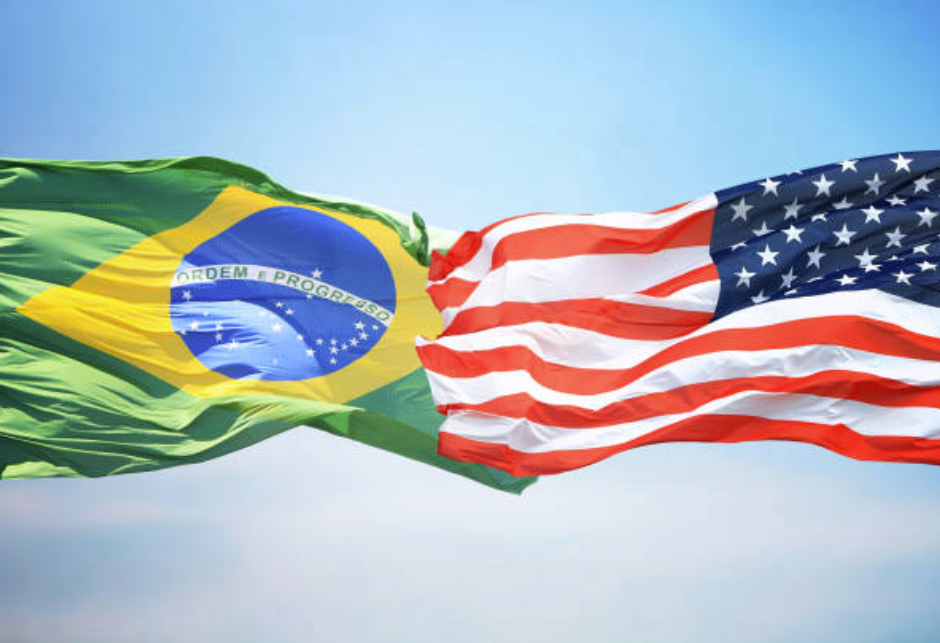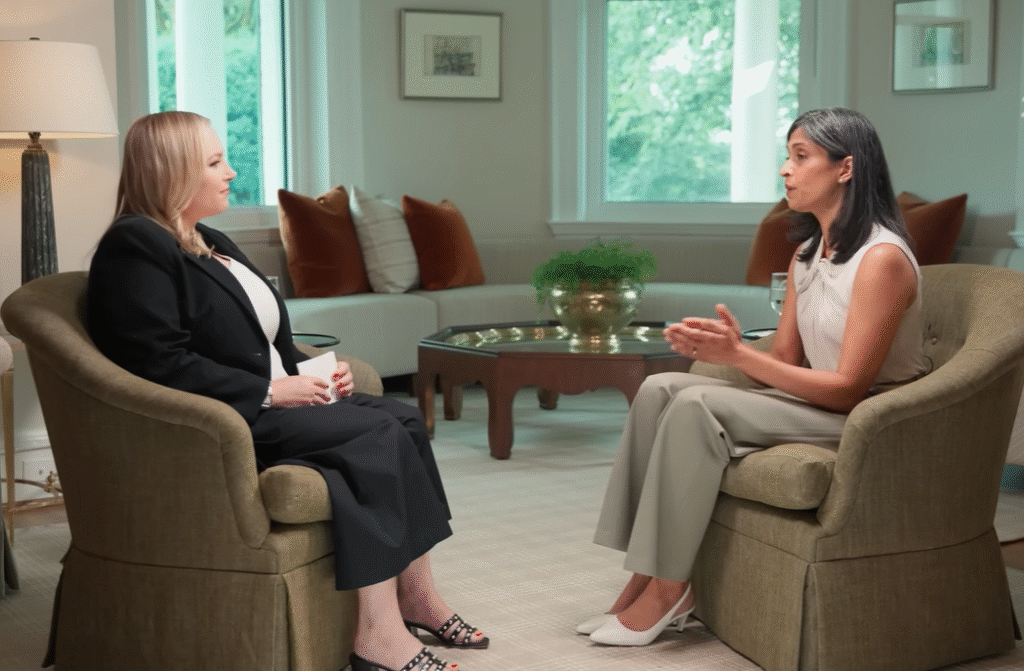
In July 2025, U.S. President Donald Trump took a bold and controversial step by imposing a 50% Donald Trump Brazil Tariffs on most goods imported from Brazil. This drastic measure was aimed not primarily at addressing economic trade imbalances, but as a political response to Brazil’s internal developments, especially the prosecution of Trump’s ally, former President Jair Bolsonaro. Trump framed the tariffs as necessary to counter what he called a “witch hunt” against Bolsonaro and to defend free speech, accusing Brazil’s judiciary of suppressing conservative voices and social media.
While the tariffs exempt key Brazilian sectors like aircraft, energy, and orange juice, they hit major exports such as beef and coffee hard. This move has escalated diplomatic tensions between the two countries, provoking strong condemnation from Brazil’s government, which denounces the tariffs as unjust and threatens retaliatory actions. This introduction sets the stage to explore the reasons behind these tariffs, their economic and political implications, and the broader impact on U.S.-Brazil relations and global trade.
What Are Donald Trump Brazil Tariffs?
Donald Trump’s 50% tariffs on most Brazilian goods, announced in July 2025, represent a significant and unusual use of trade policy driven primarily by political motivations rather than traditional economic concerns. These tariffs were aimed at pressuring Brazil in response to the prosecution of former President Jair Bolsonaro, a close Trump ally, whom Trump describes as the victim of a politically motivated “witch hunt.”
While key Brazilian exports like aircraft, energy products, and orange juice were exempted, major sectors such as beef and coffee faced steep tariffs, causing economic pain for Brazilian producers and higher prices for American consumers. The move strained diplomatic relations, with Brazil condemning the tariffs as unjustified interference in its domestic affairs and threatening retaliatory measures. Overall, these tariffs showcase how trade tools can be used to influence foreign political matters, leading to complex economic and diplomatic consequences.
Brief Timeline: How Did Donald Trump Brazil Tariffs Happen?
- Spring 2025: Trump starts warning about raising tariffs worldwide to protect U.S. interests.
- July 9, 2025: Trump sends a letter to Brazil’s President, Luiz Inácio Lula da Silva, threatening big tariffs in response to Brazil’s prosecution of former President Jair Bolsonaro.
- Late July 2025: Trump signs an executive order. He uses emergency powers to impose 50% tariffs on most Brazilian goods. Originally, the start date was August 1, but later it moved to August 6, giving businesses a brief delay.
- August 2025: The tariffs take effect.
Why Did Trump Choose Brazil and Why Now?
This tariff decision is more about politics than trade. Trump’s key reasons include:
- Bolsonaro’s Trial: Brazil’s courts are prosecuting Jair Bolsonaro, who lost the 2022 election and faces charges tied to an attempted coup. Bolsonaro is a strong Trump ally. Trump views Bolsonaro’s legal struggles as a “witch hunt.”
- Free Speech Claims: Trump accuses Brazil’s Supreme Court of suppressing conservative voices and censoring social media.
- US Trade Surplus: Normally, tariffs are used to fix trade deficits, but the U.S. actually sells more to Brazil than it buys from Brazil.
- Emergency Declaration: Trump’s executive order claims Brazil’s actions create an “economic emergency” for the U.S., justifying rare presidential intervention.
What Do the Donald Trump Brazil Tariffs Cover?
The executive order places a 50% tariff on many Brazilian exports, one of the highest rates the U.S. has ever used. However, Trump created lots of exceptions:
- Not Included: Aircraft, energy products like oil, fertilizers, orange juice, and some metals do not face the 50% tax.
- Included: Some of Brazil’s biggest exports, like beef and coffee, do face the new tariffs. These industries are expected to lose billions of dollars as a result.
What Is Brazil’s Response?
President Lula and his government have strongly condemned the tariffs. They called them “unjustifiable” and politically driven. Brazil is considering its own counter-tariffs but says it is open to talking with the U.S.—except about Bolsonaro’s trial. Brazilian leaders argue that their court system is independent and that the U.S. should not interfere in domestic legal matters.
Brazilian and U.S. Businesses Speak Out
- Brazilian Exporters: Ranchers, coffee growers, and beef exporters are angry. They warn the tariffs will slash profits and force layoffs.
- Some Brazilian Industries Relieved: Aviation, major energy companies, and juice exporters, like those delivering for major American brands, are thankful for exceptions.
- U.S. Businesses and Consumers: Importers complain they now pay much more for favorite Brazilian products. American consumers could see higher prices for their morning coffee or steak as importers pass on the costs.
Economic Impact: Winners and Losers
Losers
- Brazilian Beef and Coffee Producers: Coffee and meat face steep U.S. tariffs. Producers predict huge losses, possibly over $1 billion for beef alone in just half a year.
- American Coffee Drinkers and Grocers: About a third of America’s coffee comes from Brazil, and more than half of its orange juice—though juice is exempt for now. Still, coffee drinkers may pay more.
- Global Trade System: The move hurts trust. Businesses fear further trade wars and higher costs.
Winners
- Protected U.S. Industries: American beef and coffee producers avoid competition from Brazil, at least in the U.S. market.
- Select Brazilian Businesses: Exempt industries (aviation, energy, orange juice) temporarily escape the worst, though uncertainty remains.
The Political Drama Behind the Move
President Trump is using tariffs as a tool to influence Brazil’s political path:
- He openly supports Bolsonaro and criticizes the Brazilian courts.
- U.S. authorities accuse a key Brazilian Supreme Court justice of serious “censorship and abuse” regarding social media and conservative voices. Treasury Secretary Scott Bessent even named and condemned this justice in public.
- Trump frames the tariffs as defending “American values” and “freedom,” not just business interests.
Are These Tariffs Legal?
The White House cites a 1977 law that gives the president broad powers during “national emergencies.” Trump’s team claims that the prosecution of Bolsonaro and alleged free speech violations abroad create an emergency that hurts the U.S. Critics say this is a stretch, since the real issues are within Brazil, not the U.S..
Exceptions and Loopholes
Though the public hears loud, tough promises, the real impact is softened by exceptions:
- Some goods loaded and shipped before August 6 can enter duty-free if they arrive before October 5, 2025.
- The actual average tariff rate on Brazilian exports will probably be about 31%, lower than the headline number, according to experts. That’s because many categories (like mining, energy, and large manufactured goods like airplanes) are exempt.
Diplomatic Fallout
The new tariffs produce more than just financial pain:
- U.S./Brazil Relations: Both sides blame each other for bad faith. Brazil says it will defend its industries, but also hopes to avoid outright war.
- Potential for Retaliation: Brazil might put its own tariffs on American goods. Trump threatens to answer with still harsher measures if that happens.
- Global Ripples: Other countries are watching. Some, like Canada and India, have also faced high new U.S. tariff rates in 2025. Many fear this could turn into a worldwide trade war.
The Human Side: Who Gets Hurt and Who Benefits?
- Brazilian Workers: Livelihoods are at risk in beef and coffee. Some farmers and plant workers could lose jobs.
- American Consumers: Coffee, beef, and other foods may get more expensive at the grocery store.
- Activists: Supporters of free speech and democracy in both the U.S. and Brazil disagree about whether these tariffs help or hurt the cause.
- Politics: Trump wins support from U.S. farmers and conservative voters, while Lula enjoys a bump from standing up to the U.S..
The Future: What Happens Next?
- Negotiations: Both sides say they want some solution. Talks could lead to changes or removals of specific tariffs, or open up new markets.
- Short-Term Pain, Possible Long-Term Adjustments: Brazilian exporters may seek new buyers. American importers might change their supply chains.
- Election and Political Impacts: The tariffs play into elections and court cases in both nations. Bolsonaro remains barred from running in Brazil’s next presidential race, but debates over his fate continue to shape both Brazilian and American politics.
Conclusion: A Tariff War Rooted in Politics
The 50% tariffs the Trump administration put on Brazil are unusual in scale and in purpose. Unlike earlier trade disputes, this one is mostly focused on political issues—especially the fate of Jair Bolsonaro and struggles over democracy, free speech, and influence in the Americas.
While some U.S. industries and Brazilian sectors are safe for now, beef and coffee exporters in Brazil are hit hard. American buyers may soon feel the pinch at the store. Diplomats and business leaders are watching nervously to see if cooler heads will find a way out, or if this trade clash will get even bigger. Both economies and millions of lives are caught in the middle of this new, more personal, phase of the U.S.–Brazil relationship.

